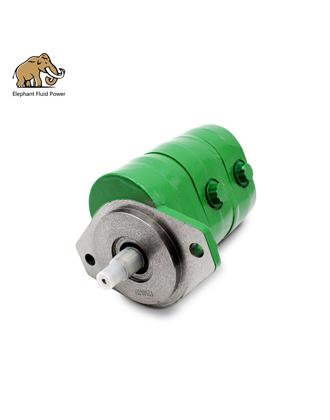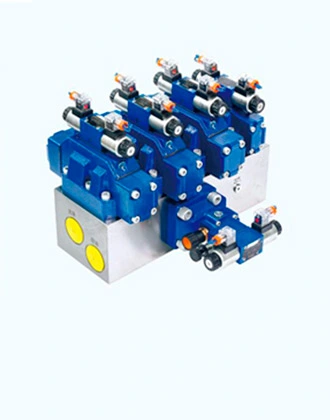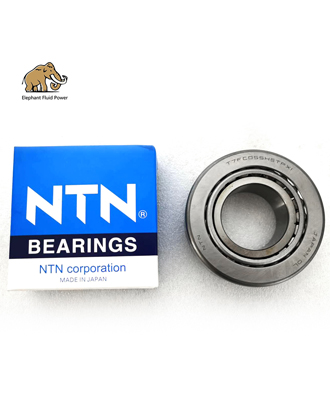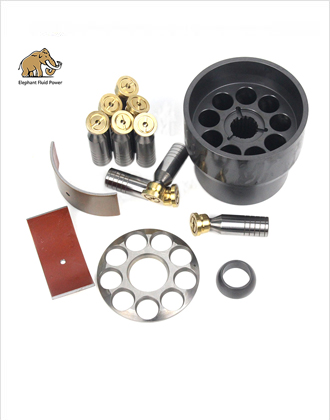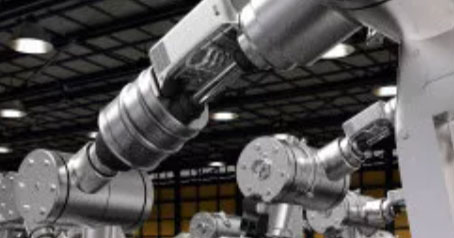Hydraulic pumps operate under high pressure and are also exposed to high temperatures. This makes them prone to wear over time. Leaks occur when fluid bypasses the pump shaft. It may happen within the system and therefore may not be visible. Leaks in hydraulic pumps can thin the fluid, increasing thermal loads through aeration and cavitation, so both higher temperatures and lack of lubrication can lead to damage.
1. How to detect hydraulic pump leakage?
Hydraulic leaks outside the hydraulic pump are the easiest to detect because there will be oil sumps. Internal leaks can be suspected by changes in system performance and efficiency. Common signs of leaks include pump whining, rattling or rattling, increased fluid temperature (any reading above 180°F), and slow system operation. Cycle time may gradually increase, indicating pressure drop causing overheating. For subtle signs of leaks, use a hydraulic flow tester, ultrasonic detector, or benchtop test system to locate leaks and repair them.
2. What is the reason for the leakage of the hydraulic pump?
Wear is the biggest cause of hydraulic system leaks. Hydraulic fluids tend to be very abrasive, especially when tiny metal particles are suspended. At high operating pressures, these wear components from the inside, especially pump seals, which leak most often. The pump seal is located around the shaft that connects the pump to the motor and contains the fluid on the pump side. Depending on its design, a pump may have a fluid seal around its piston or a seal containing fluid within the pump cavity.
Filter problems are a major cause of hydraulic pump leaks. Regular filter replacement can control wear and ultimately prevent system failure because the filter captures the abrasive particles that are shed as components wear out. The more internal wear, the more surface area the fluid contacts. This further increases wear rates and the potential for leaks. Poor system design can also lead to pump leaks. If equipment is not manufactured to the correct tolerances, it may not perform as intended and may increase wear, damage and leakage. Incorrectly installed parts can also cause leaks.
3. Is it time to replace the hydraulic pump?
If it's not just the seals that are worn out, the pump may be nearing the end of its useful life. Evaluating pump components helps determine the condition of parts such as couplings, filters, and pump shafts. Hydraulic pumps with multiple faulty parts should be replaced as more damage may be caused and additional repairs may be required soon.
 French
French
 Portuguese
Portuguese
 Russian
Russian
 German
German
 Spanish
Spanish
 Japanese
Japanese
 Korean
Korean
 Irish
Irish
 Greek
Greek
 Turkish
Turkish
 Italian
Italian
 Danish
Danish
 Romanian
Romanian
 Indonesian
Indonesian
 Czech
Czech
 Afrikaans
Afrikaans
 Swedish
Swedish
 Polish
Polish
 Basque
Basque
 Catalan
Catalan
 Esperanto
Esperanto
 Hindi
Hindi
 Lao
Lao
 Albanian
Albanian
 Amharic
Amharic
 Armenian
Armenian
 Azerbaijani
Azerbaijani
 Belarusian
Belarusian
 Bengali
Bengali
 Bosnian
Bosnian
 Bulgarian
Bulgarian
 Cebuano
Cebuano
 Chichewa
Chichewa
 Corsican
Corsican
 Croatian
Croatian
 Dutch
Dutch
 Estonian
Estonian
 Filipino
Filipino
 Finnish
Finnish
 Frisian
Frisian
 Galician
Galician
 Georgian
Georgian
 Gujarati
Gujarati
 Haitian
Haitian
 Hausa
Hausa
 Hawaiian
Hawaiian
 Hebrew
Hebrew
 Hmong
Hmong
 Hungarian
Hungarian
 Icelandic
Icelandic
 Igbo
Igbo
 Javanese
Javanese
 Kannada
Kannada
 Kazakh
Kazakh
 Khmer
Khmer
 Kurdish
Kurdish
 Kyrgyz
Kyrgyz
 Latin
Latin
 Latvian
Latvian
 Lithuanian
Lithuanian
 Luxembourg
Luxembourg
 Macedoniar
Macedoniar
 Malagasy
Malagasy
 Malay
Malay
 Malayalam
Malayalam
 Maltese
Maltese
 Maori
Maori
 Marathi
Marathi
 Mongolian
Mongolian
 Burmese
Burmese
 Nepali
Nepali
 Norwegian
Norwegian
 Pashto
Pashto
 Persian
Persian
 Punjabi
Punjabi
 Serbian
Serbian
 Sesotho
Sesotho
 Sinhala
Sinhala
 Slovak
Slovak
 Slovenian
Slovenian
 Somali
Somali
 Samoan
Samoan
 Scots Gaelic
Scots Gaelic
 Shona
Shona
 Sindhi
Sindhi
 Sundanese
Sundanese
 Swahili
Swahili
 Tajik
Tajik
 Tamil
Tamil
 Telugu
Telugu
 Thai
Thai
 Ukrainian
Ukrainian
 Urdu
Urdu
 Uzbek
Uzbek
 Vietnamese
Vietnamese
 Welsh
Welsh
 Xhosa
Xhosa
 Yiddish
Yiddish
 Yoruba
Yoruba
 Zulu
Zulu

